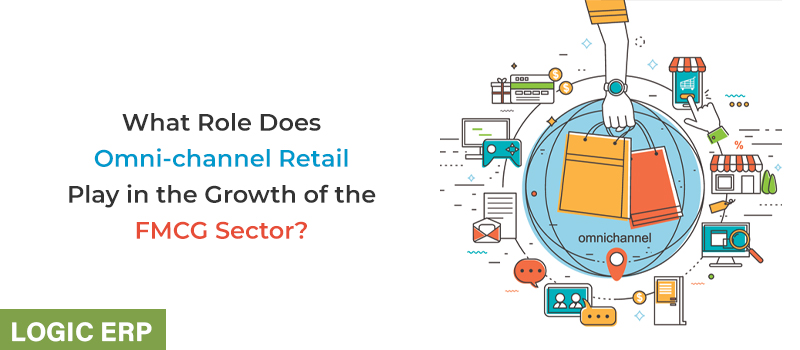

In India, there has always been fierce competition in the FMCG sector. CPG (consumer packaged goods) firms are facing intense competition from merchants that have launched their own publicly owned offers in recent years. Global online shops are also a threat to both retailers and CPG companies. Companies are creating new offers in response to new possibilities and threats as they fight on several fronts. The bulk of FMCG companies have realized that the effectiveness of their supply chain is both the problem and the solution. Although conventional trade remains the FMCG sector’s backbone, consumers are fast adopting technological tools, prompting companies to develop new tactics and formats. The request for omni-channel buying experience that responds to changing business dynamics has increased as a result of the push for a fresh approach.
The trend in shopping is to have an omni-channel experience
Rising disposable earnings, increased accessibility, greater awareness, better infrastructure, changing consumer preferences, internet connectivity access, and electronic connectedness all contribute to the country’s FMCG sector’s rise. However, with personal preferences and disruptive trends, FMCG firms are fast engaging in omni-channel solely integrating a commercial extension with an e-commerce wing, which is not the best strategy. Today’s consumers find new goods online, check them in physical stores, research them digitally, then buy them online or in a shop. An omni-channel footprint is not about discarding physical stores to re-invent digital techniques, but it is an approach that must deliver a consistent brand experience to customers where they may establish relationships that transcend channels. Players who employ an omni-channel strategy are considerably more likely to emerge stronger in the coming years than those who rely solely on contemporary trade or e-commerce.
The FMCG business in India is fiercely competitive, and companies must provide superior shopping experiences and great customer service to stand apart. To do so, however, it is necessary to comprehend and adapt to new behaviors and demands, as well as reassess potential consumers’ comprehension. It’s possible that what worked in the past will need to be tweaked. Brands must reconsider their distribution platform, product availability, communication, and marketing channels using statistics and data.
Stand out from the crowd
Today, fast-moving consumer goods (FMCG) corporations are integrating their supply network with each other to begin item disbursement from the manufacturer to the retailer. Due to constraints such as massive density, timekeeping, and the supplier’s distant geographic proximity, getting clarification on your product development from all of your suppliers might be difficult. Irrespective of whether a supplier works in a town or a rural location, Logic ERP distributor management system software can provide you with all the data you require.
The Logic ERP distributor management solution system will take care of all of the essential activities by lowering extra costs, accelerating delivery, and starting to show a benefit with its implementation by keeping absolute control over these transitional activities. Inventory levels for FMCG companies must be ideal at a variety of interfaces, including retailers, distributors, and stockists. The Logic ERP Distributor system offers you with precise inventories, expiry, batch numbers, refunds, and other information.
If you employ the right software application to drive your supply and marketing activities, you can achieve competitive advantage in even the most segmented and fast-paced sector. The DMS (Distributor Management System) by Logic ERP comes into play here. The Logic ERP supplier management platform, which is tailored for businesses in developing and growing markets, provides full visibility over supplementary sales and inventories at your supplier’s end. Using web access and the smartphone architecture, distributors may manage the entire sales cycle from potential through order fulfillment at the workplace, on the move, or from headquarters.
Conclusion:
Omni-channel is really not just one element for FMCG companies; it’s multiple things. A company’s omni-channel strategy must be complete and thorough. It is heavily reliant on a solid platform supported by four pillars: distribution network, branding and promotion, logistics, and delivery and service.

